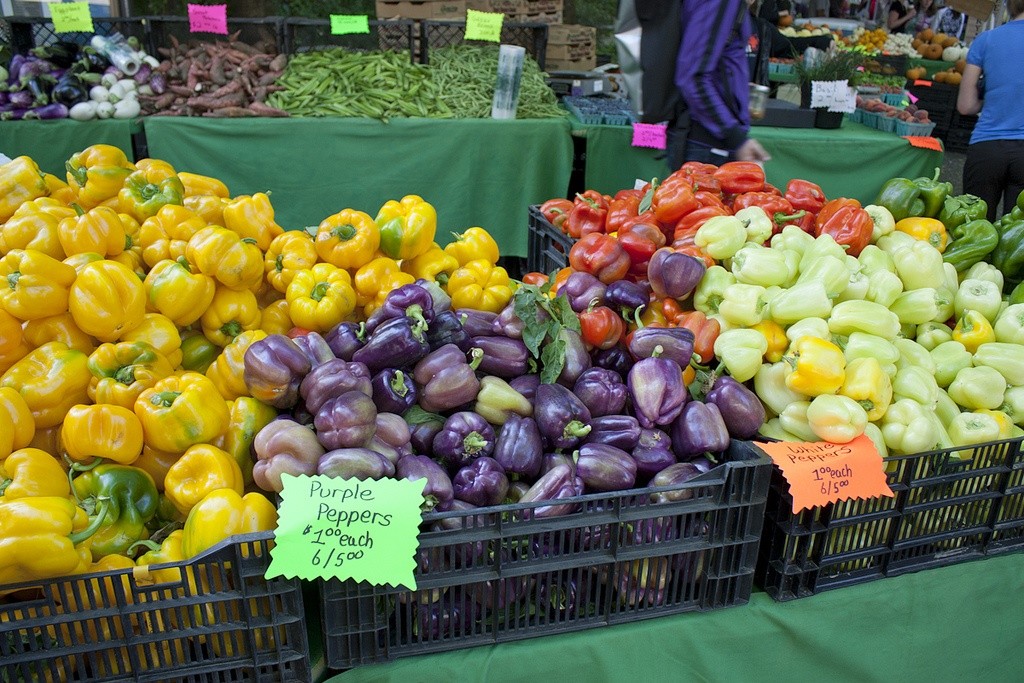We exist to shake up today’s food industry, who too often innovates one foot at a time. Instead, we want to aim fifty feet ahead. From concept cars to package-delivering drones, let’s take a cue from the tech and automotive industries. Big thinking energizes innovation, and we want to bring this to the food world.
– thefuturemarket.com
 The Future Market, a new food innovation project by Studio Industries, has a vision of what America’s grocery stores will look like in the year 2065. They are completely digital and high-tech, with the ability to personalize your purchases based on your allergies and nutrition needs. This market will have digital shelves rather than physical ones, and ordering will be done on screen with your groceries compiled for you at the checkout – there is no need to carry all of your food through the store!
The Future Market, a new food innovation project by Studio Industries, has a vision of what America’s grocery stores will look like in the year 2065. They are completely digital and high-tech, with the ability to personalize your purchases based on your allergies and nutrition needs. This market will have digital shelves rather than physical ones, and ordering will be done on screen with your groceries compiled for you at the checkout – there is no need to carry all of your food through the store!
The basis of the Future Market idea is the projection of our way of life today into a future where fossil fuels will be rationed. The visioneers behind the market account for this scarcity by discussing the transformation of the agribusiness industry from using fossil fuel produced fertilizers to more sustainable crop rotation practices instead. What is not accounted for, however, is how these shortages will affect our high-tech way of life and centralized food industry production and distribution practices. Even some organic farms today, which have already gotten rid of synthetic fertilizers produced with fossil fuels are very energy intensive when they are large-scale farms and wide-scale food distributers.
Yet in reality, our future food markets will look more like markets of centuries past, or even those present in most parts of the world today—with micro-entrepreneurs selling basic unprocessed or minimally processed foods directly to consumers. The Future Market’s advertised future food, Crop Crisps, are still highly processed and packaged, both areas that require fossil fuel consuming centralized production practices. A more likely scenario would involve markets that contain decentralized, local food sources. It will be like shopping at a farmer’s market today, where the produce is provided by local farms and gardens. In future urban areas, it is likely that there will be the concept of a “foodshed”, with surrounding farms shipping their produce into the city through bicycle-operated carriages or other sustainable means.
The aspect of personalization discussed by The Future Market will not be possible through ordering groceries on a screen, but will be customized and tailored to you by what your neighbors decide to plant in their yards. More people will have to turn to local food markets in the future as a chemical-intensive globalized food trade won’t survive the transition into a hot world. Then again, we might have a future where micro-vendors are calling out from their market stands, “Get your Soylent Yellow and Red.* And remember Tuesday is Soylent Green day.” But let’s hope not.
*Not to be confused with Crop Crisps

Photo Credit: imelda
—
About the Author – Emily Helminen is a fellow for the Transforming Cultures project at the Worldwatch Institute. With a background in biology, engineering and philosophy, Emily has followed an unlikely path to pursue a career in environmental sustainability, but it is the field in which she hopes to truly make a difference.